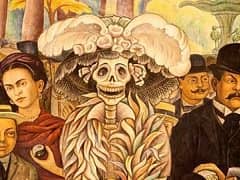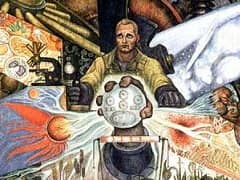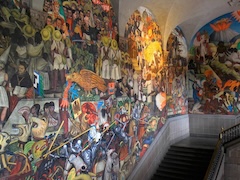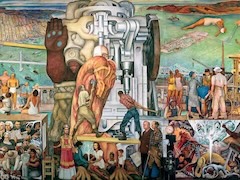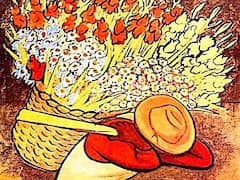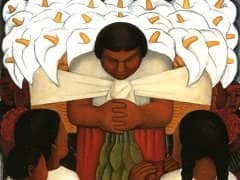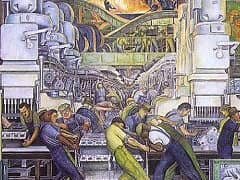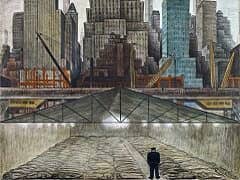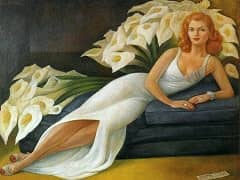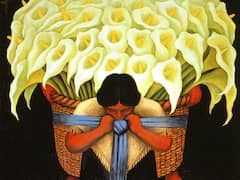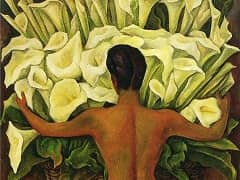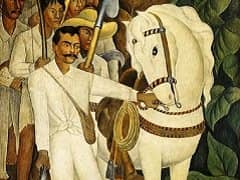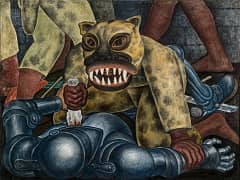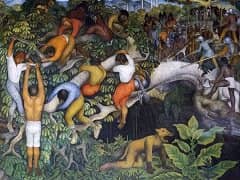Portrait of Marevna, 1915 by Diego Rivera
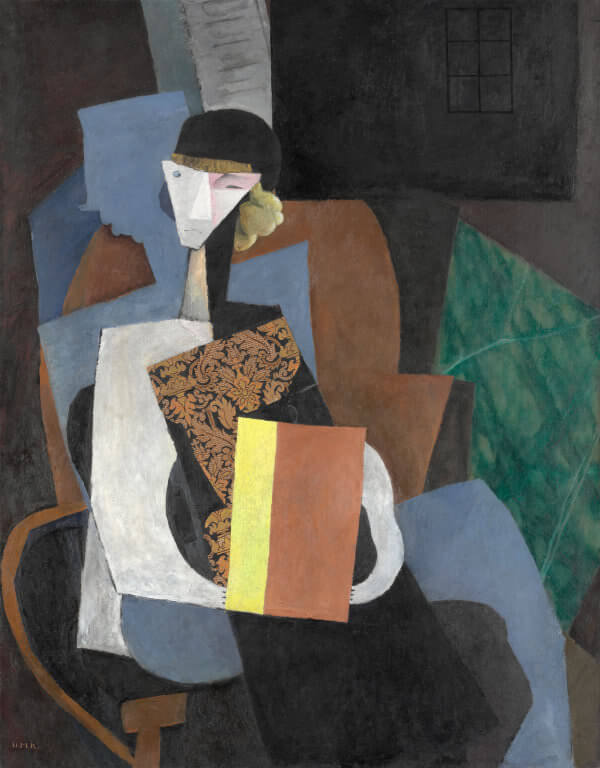
Prior to achieving renown as a muralist, Diego Rivera lived in Paris in the milieu of Pablo Picasso and worked in a Cubist manner. Portrait of Marevna depicts Rivera's mistress, the Russian artist Maria Vorobieff-Stebelska. The couple's relationship was tempestuous; Rivera later described Marevna as a "she-devil," and he conveyed a sense of her ferocity in this portrait, particularly in the figure's distinctive frown and squinting eye.
The portrait exemplifies Rivera's growing adoption of elements of Synthetic Cubism, in which he constructed images sequentially, building layer upon layer in an additive manner rather than deconstructing forms into fragmented planes. Rivera emphasized the geometric patterning of the composition through his use of textures, both painterly and illusionistic. The most notable example of his use of texture is the rectangular form with a brocade pattern, which appears to be a collaged piece of fabric or wallpaper, but is in fact a trompe l'oeil facsimile that alludes to Cubist collage techniques.

